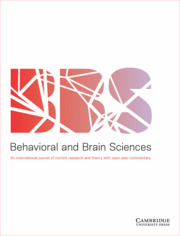Article contents
Self-experimentation: Friend or foe?
Published online by Cambridge University Press: 01 April 2004
Abstract
The topics discussed in this response are in four broad areas: (1) Idea generation, including the failure to discuss and teach idea generation and how to nurture new ideas (sect. R2), sources of ideas worth testing with self-experimentation (sect. R3), and unusual features of the situation that may have increased the discovery rate (sect. R4); (2) Miscellaneous methodological issues, such as the value of mental experiments (sect. R5) and the limitations of double-blind experiments (sect. R6); (3) Subject-matter issues, including the relationship of this work to other evolutionary psychology studies and a new way to test evolutionary explanations (sect. R7), as well as questions about the mood results (sect. R8) and the weight results (sect. R9); and (4) Self-experimentation, including its difficulty (sect. R10) and future (sect. R11).
Information
- Type
- Author's Response
- Information
- Copyright
- Copyright © Cambridge University Press 2004
References
- 1
- Cited by

